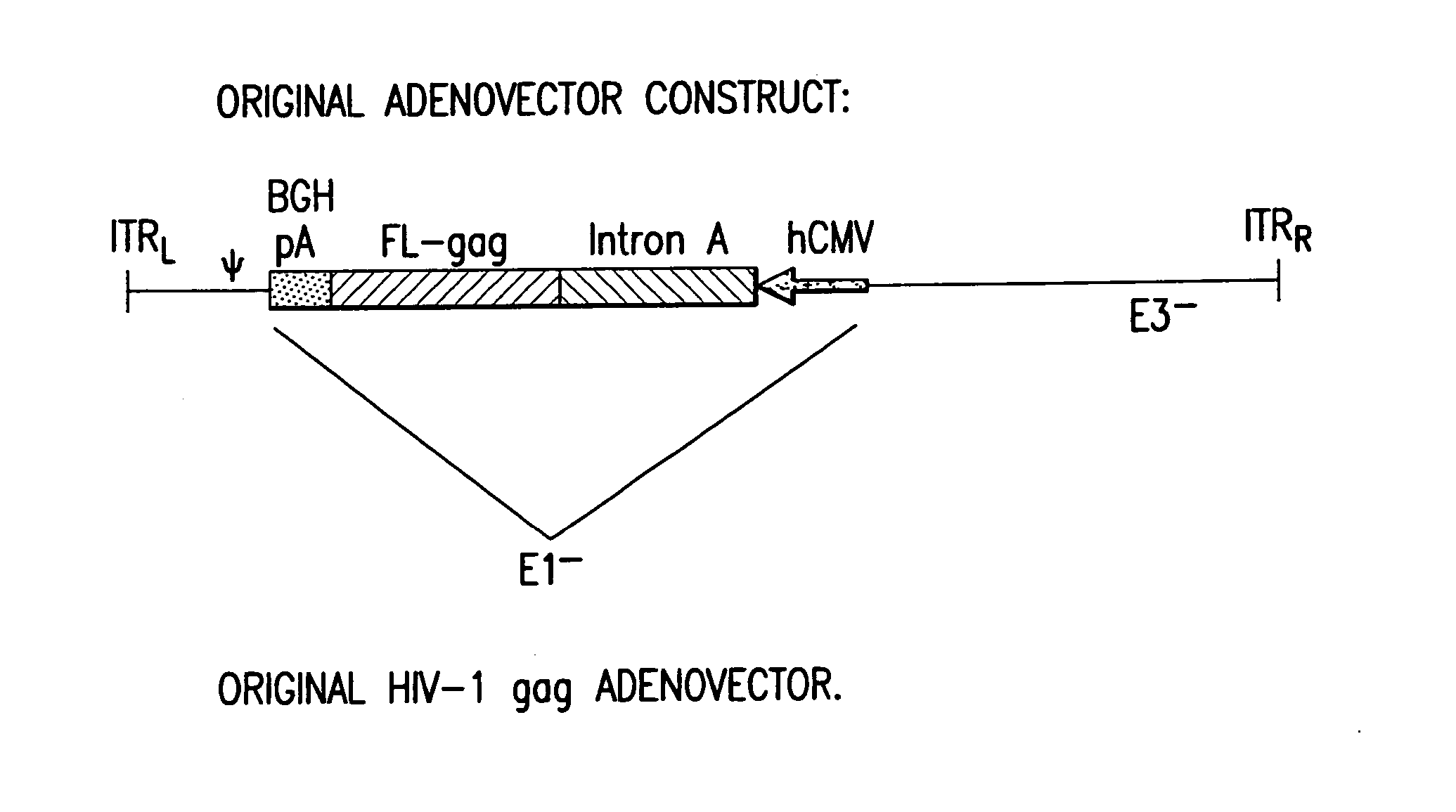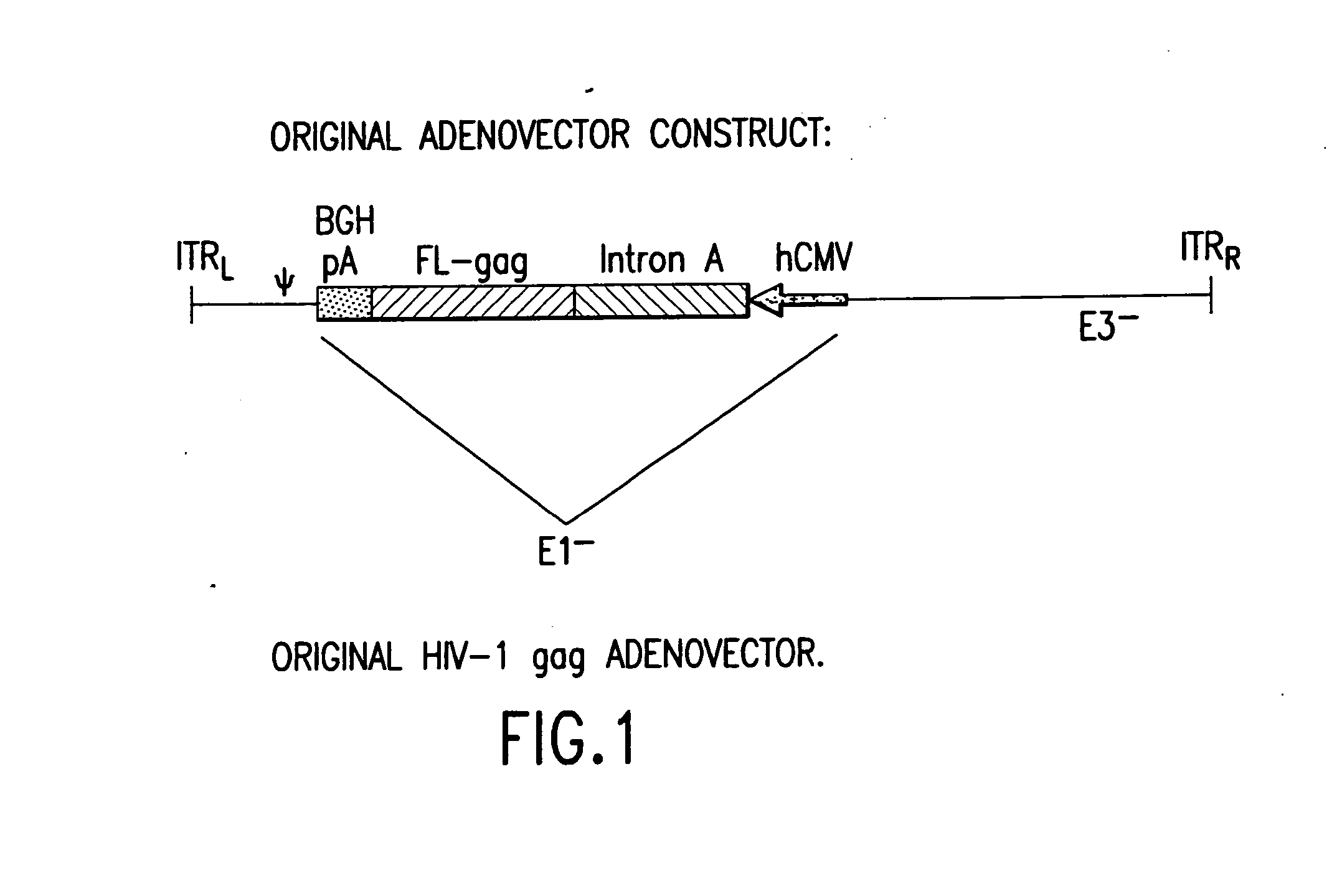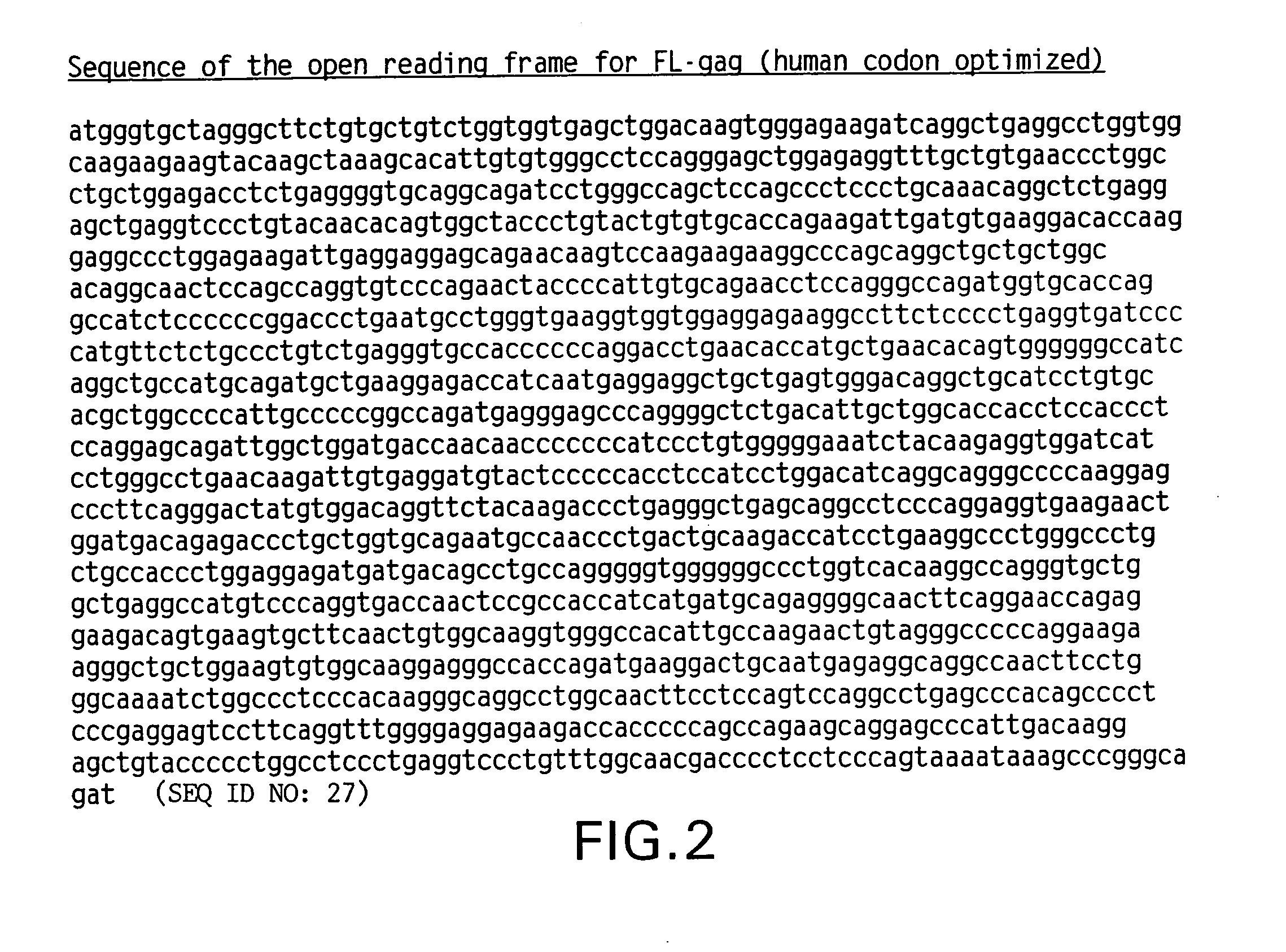Enhanced first generation adenovirus vaccines expressing codon optimized HIV1-Gag, Pol, Nef and modifications
a technology of adenovirus and codon, which is applied in the field of recombinant, replication-deficient first-generation adenovirus vaccines, can solve the problems of minimal impact on halting the spread of infection within the human population, drug effect not significant, and serious impairment of the ability of the body to fight most invaders, so as to improve the cellular-mediated immune response, improve the effect of replication-defective recombinant and improve the immune respons
- Summary
- Abstract
- Description
- Claims
- Application Information
AI Technical Summary
Benefits of technology
Problems solved by technology
Method used
Image
Examples
example 1
Removal of the Intron A Portion of the hCMV Promoter
[0159] GMP grade pVIJnsHIVgag was used as the starting material to amplify the hCMV promoter. PVIJnsHIVgag is a plasmid comprising the CMV immediate-early (IE) promoter and intron A, a full-length codon-optimized HIV gag gene, a bovine growth hormone-derived polyadenylation and transcriptional termination sequence, and a minimal pUC backbone; see Montgomery et al., supra for a description of the plasmid backbone. The amplification was performed with primers suitably positioned to flank the hCMV promoter. A 5′ primer was placed upstream of the Mscl site of the hCMV promoter and a 3′ primer (designed to contain the BglII recognition sequence) was placed 3′ of the hCMV promoter. The resulting PCR product (using high fidelity Taq polymerase) which encompassed the entire hCMV promoter (minus intron A) was cloned into TOPO PCR blunt vector and then removed by double digestion with Msc1 and BglII. This fragment was then cloned back into ...
example 2
Gag Expression Assay for Modified Gag Transgenes
[0164] Gag Elisa was performed on culture supernatants obtained from transient tissue culture transfection experiments in which the two new hCMV-containing plasmid constructs, pV1JnsCMV(no intron)-FLgag-bGHpA and pV1JnsCMV(no intron)-FLgag-SPA, both devoid of intron A, were compared to pV1JnsHIVgag which, as noted above possesses the intron A as part of the hCMV promoter. Table 2 below shows the in vitro gag expression data of the new gag plasmids compared with the GMP grade original plasmid. The results displayed in Table 2 show that both of the new hCMV gag plasmid constructs have expression capacities comparable to the original plasmid construct which contains the intron A portion of the hCMV promoter.
TABLE 2In vitro DNA transfection of originaland new plasmid HIV-1 gag constructs.Plasmidμg gag / 10e6 COS cells / 5 μg DNA / 48 hrHIVFL-gagPR9901a10.8PVIJns-hCMV-FLgag-bGHpAb16.6pV1Jns-hCMV-FLgag-SPAb,c12.0
aGMP grade pV1Jns-hCMVintronA-FL...
example 3
Rodent (Balb / c) Study for Modified gag Transgenes
[0165] A rodent study was performed on the two new plasmid constructs described above—pV1JnsCMV(no intron)-FLgag-bGHpA and pV1JnsCMV(no intron)-FLgag-SPA— in order to compare them with the construct described above possessing the intron A portion of the CMV promoter, pV1JnsHIVgag. Gag antibody and Elispot responses (described in PCT International Application No. PCT / US00 / 18332 (WO 01 / 02607) filed Jul. 3, 2000, claiming priority to U.S. Provisional Application Ser. No. 60 / 142,631, filed Jul. 6, 1999 and U.S. application Ser. No. 60 / 148,981, filed Aug. 13, 1999, all three applications which are hereby incorporated by reference) were measured. The results displayed in Table 3 below, show that the new plasmid constructs behaved equivalently to the original construct in Balb / c mice with respect to their antibody and T-cell responses at both dosages of plasmid DNA tested, 20 μg and 200 μg.
TABLE 3HIV191: Immunogenicity of V1Jns-gag under ...
PUM
| Property | Measurement | Unit |
|---|---|---|
| half life | aaaaa | aaaaa |
| length of time | aaaaa | aaaaa |
| pH | aaaaa | aaaaa |
Abstract
Description
Claims
Application Information
 Login to View More
Login to View More - R&D
- Intellectual Property
- Life Sciences
- Materials
- Tech Scout
- Unparalleled Data Quality
- Higher Quality Content
- 60% Fewer Hallucinations
Browse by: Latest US Patents, China's latest patents, Technical Efficacy Thesaurus, Application Domain, Technology Topic, Popular Technical Reports.
© 2025 PatSnap. All rights reserved.Legal|Privacy policy|Modern Slavery Act Transparency Statement|Sitemap|About US| Contact US: help@patsnap.com



